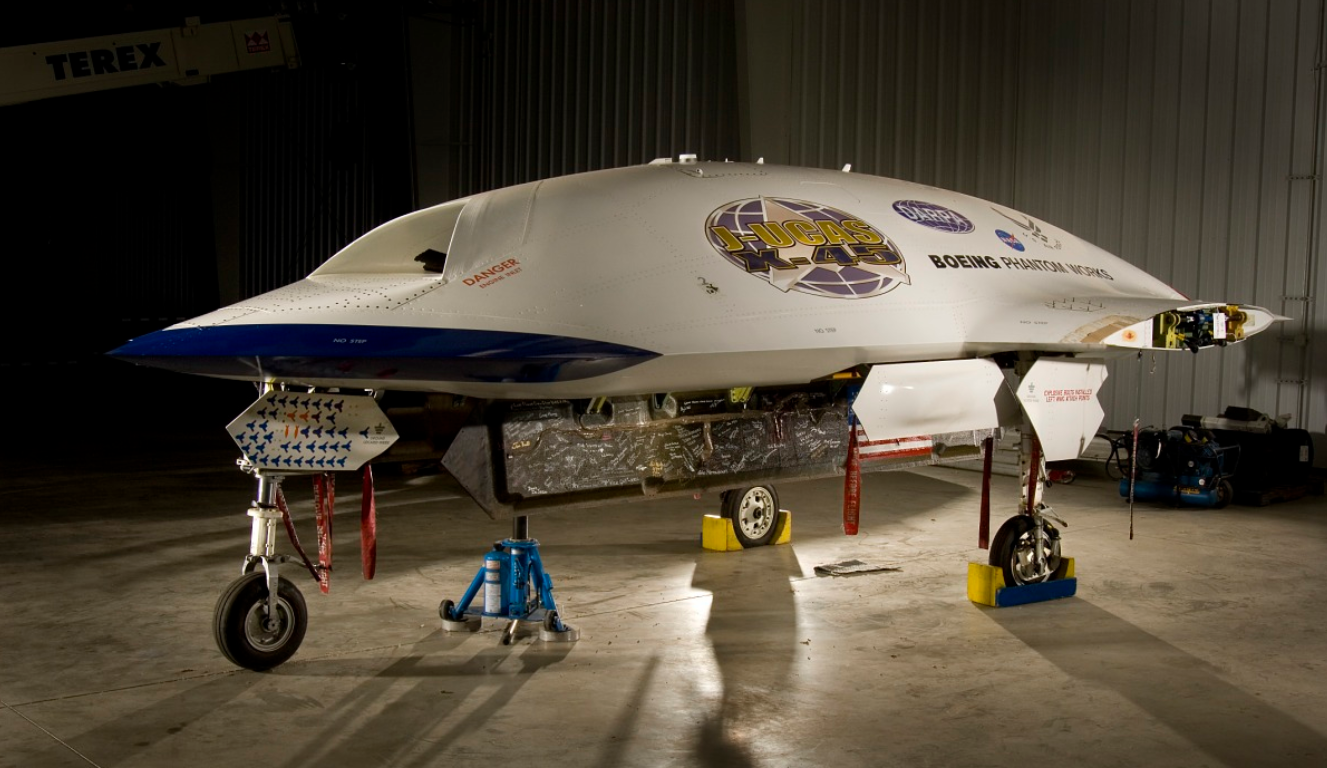
At the beginning of the 21st century, the sky over California’s Mojave Desert became the stage for a turning point in aviation history. A strangely shaped, jet-powered aircraft came out of the desert heat that no one had seen before. It was not just another prototype, but a futuristic vision where the air combat would not only rely on human pilots. Boeing X-45A was that next-generation aircraft, a revolutionary unmanned aerial vehicle that marked a new era in military flight.

Phantom Works, Boeing’s secret division, came up with the idea for the project and later collaborated with DARPA and the U.S. Air Force on an almost impossible challenge: they wanted to “get rid of” enemy air defenses without endangering the lives of pilots. Accordingly, they designed the X-45A to demonstrate that it was possible for machines to perform missions traditionally done by humans.

X-45A was ugly if you looked at it for the first time. It had a bug-like appearance with its rounded body, narrow landing gear, and 26-foot wing. Nevertheless, in every design detail, the project was concentrated on one thing – fighting. Elsie May, the first of the two prototypes, took a flight for the first time in 2002 from Edwards Air Force Base.

With the name Stingray One, it ascended to 7500 feet, and during its maiden flight, it attained 225 miles per hour. When the drone departed the ground, the flight director’s “She’s off!” metaphorically shared his emotions on seeing history made for the first time. Shortly, however, this weird new plane made history once more as it performed the first autonomous UAV ordinance release on target.

The cautious steps of the program rapidly changed into big achievements. Two prototypes were produced, with the first official flight done on May 22, 2002. That initial mission was only 14 minutes long only but it marked the beginning of a series of breakthroughs. By April 2004, the X-45A was successful in hitting a ground target with a 250-pound inert precision-guided bomb.

A few months later, the team presented one of its capabilities that was most amazing: one human operator controlling two drones, with real-time coordination. By February 2005, the two went even further and made autonomous decisions of which aircraft should strike simulated targets and how to respond to the new threats as they appeared. This was not just a simple preprogrammed showcase, but real-time adaptive decision-making without a pilot’s constant intervention.

The X-45A was an idea much bigger than a single plane that it merely represented. It was the idea of Unmanned Combat Air Vehicles (UCAV), a concept of machines that were designed to make quick, precise hits at less cost and with minimal risk in comparison to traditional aircraft. Without a pilot caged inside, these vehicles avoided the weight and complexity of human life-support systems and cut down on the years of training needed to prepare fighter pilots. Even a small UAV like X-45A, combined with precision weapons, could make targets heavily fortified by old times of large bombers disappear. For military planners balancing cost, risk, and effectiveness, this technology was a glimpse at a very tempting future.

All in all, however, the X-45A never entered operational service. Just like many other prototypes, it encountered the “valley of death”, a stage where promising technologies usually get stuck between demonstration and deployment because of changing budgets and priorities. DARPA has since tried to find ways to close the gap with experiments that take experimental aircraft to the real world faster, but for the X-45A, the journey ends as a demonstration program.

Boeing had already experimented with several aircraft before the X-45A, including the bizarre Bird of Prey, which tried out stealth and other production techniques that later transformed the X-45A. At present, the two prototypes are in museums, and although they are not flying, they are the silent but sturdy witnesses of the time when the unmanned aerial combat truly took off. Nevertheless, their past continues far beyond the floor of the exhibition. Future UAVs and combat drones keep on using a lot of the non-pilot features, survivability, and flexible mission, first tested in those desert skies.

X-45A’s history is not only about Boeing’s non-piloted aircraft but the aviation industry’s natural progression toward this solution in the end. It proved that machines were capable of performing intelligent, adaptive, and striking actions without constantly waiting for the input of a human.

When fast, precise, and risk-reduction innovations become the main drivers of the world, X-45A’s teachings will still be worth as much now as over two decades ago. It is far from being a thing of the past and still holds as a testament that the era of autonomous combat aircraft is not coming, but it has already been here.
